That Useful Wine Site
Search, or just roll your cursor over the colored boxes farther below.click the “x” to dismiss Search-results block.
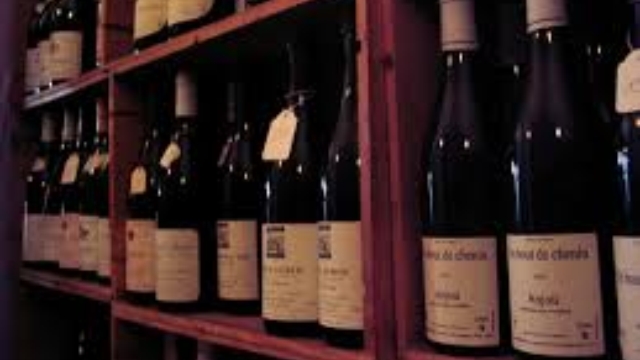
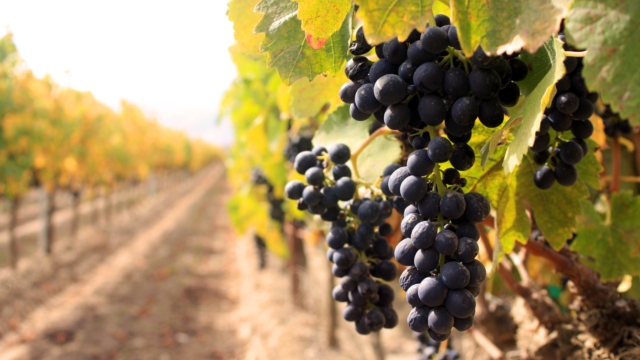
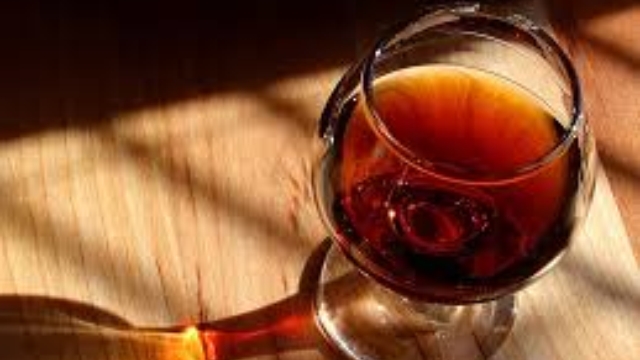
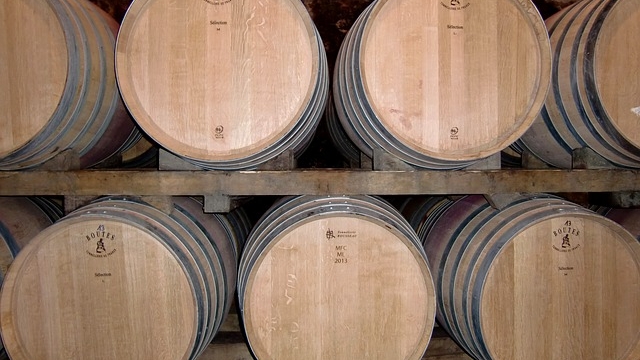
Advertisement:
Advertisement:
Quick page jumps:
(Synonyms: )Aramon du Sud-Ouest, Brocal, Brocol, Cahors, Cot de Cheragas, Cote verte, Folle noire, Gamay, Gamay 15, Gamay of Beaujolais, Gros Auxerrois, Isabelle, Jan Pierrou, Jan Pierrou, Jasmin, Jean-Pierrou, Jean-Pierrou at Sauzet, Mourvedre d’Afrique, Moutet, Napa Gamay, Noir de Chartres, Panse, Plant de Cros, Plant de la Roxo, Plant du Midi, Quercy, and Valdiguer.
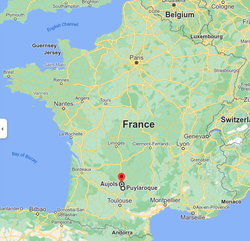
Valdiguié is a red-wine grape whose exact origins, though recent (probably early to midle 1800s), are somewhat cloudy. It seems agreed that the variety was a natural cross, discovered by someone—a grower or possibly a vineyard worker—named Valdiguié. The region where it was discovered was in or around either the French commune of Puylaroque in southern France or the nearby commune of Aujols (see map at left).
Valdiguié soon became popular throughout southern France, being a vineyard favorite: high yields and good disease resistance. In time, vine cuttings came to California, where—especially during Prohibition—they were much-liked for the same reasons the French liked them. But the problem was that the California growers were under the mistaken impression that they were growing some type of Gamay, and the wines were long sold as “Napa Gamay”, till relatively recent (1980) analyses revealed their true nature. Since 1999, such wines are required by law to be labelled as Valdiguié.
The variety, being productive (and so inexpensive), was often handled carelessly by winemakers and used to make easily sold plonk. Consequently, in both France and America, plantings have been steadily declining: France now has only a few small patches, in Languedoc and Provence. Most of the remaining action is in California, where a handful (one estimate says 15) winemakers are working with the variety. But, though the grape will never approach “noble”, when handled with some care and respect can make simple but quite pleasing wines.
Valdiguié wines are typically light in alcohol, dark-colored, with a very obvious red-berry nose and palate—raspberry and strawberry are quite frequently cited. Some makers apply a little carbonic maceration to produce wines with a fizzy/spritzy nature; more generally, it tends to be styled much like a true Gamay would be. It is a nice wine when something easy and fruit-forward without being icky is wanted, and it should be better-respected than it seems to be.
Factoid: Valdiguié wine was first released as a commercial bottling in 1874.
There are several American winemakers turning out fine specimens of Valdiguié—all but one, however, are above (often well above) our self-imposed limit of $20. Within that bound, there is but one bottling; fortunately, it is both very reasonably priced and very available.
• This wine’s Wine Searcher “Reviews” page.
• This wine’s CellarTracker review pages.
• Retail offers of this wine listed by Wine Searcher.
• Retail offers of this wine listed by 1000 Corks.
We could find no reasonably available Valdiguié wines better enough than those listed above as to justify a “splurge” price.
Advertisement:
Advertisement:
|
|
This site is one of The Owlcroft Company family of web sites. Please click on the link (or the owl) to see a menu of our other diverse user-friendly, helpful sites. |
|
| (Note: All Owlcroft systems run on Ubuntu Linux and we heartily recommend it to everyone—click on the link for more information). | ||
|
All content copyright © 2024 The Owlcroft Company
(excepting quoted material, which is believed to be Fair Use). |
This web page is strictly compliant with the W3C (World Wide Web Consortium) Extensible HyperText Markup Language (XHTML) Protocol v1.0 (Transitional) and the W3C Cascading Style Sheets (CSS) Protocol v3 — because we care about interoperability. Click on the logos below to test us!
This page was last modified on Thursday, 4 November 2021, at 1:01 am Pacific Time.
Some Descriptions of Valdiguié Wines
“Valdiguié produces dark colored wines that are low in alcohol. The wines tend to be of light to medium body and are frequently made in a style similar to the true Gamay of Beaujolais.”
“[Valdiguié] tends to be low in alcohol with fruity flavors but little varietal distinction.”
“Valdiguié makes a dark-purple wine with effusive floral aromatics and flavors of red cherry, blackberry, and pomegranate accented by black pepper and clove notes.”
“It [their vinification approach] yields a brambly, peppery, mildly meaty, deeply colored red with dark berry character and a jolt of tannins…In its modern iterations, valdiguié seems to accommodate a range of expressions. On one level, the wine can make a fine rosé…But on another level, the [acidic] tension is like a live wire, needing to be channeled, a process that starts with harvesting at the proper ripeness. Valdiguié reaches full ripeness at a low potential alcohol, but if it’s harvested early the wine will come off as painfully austere. If it’s too ripe, the resulting wine feels bland and nondescript, like lackluster zinfandel…The latest generation [of winemakers] to take on valdiguié is still experimenting, tinkering with what they want their wines to say. Whatever style they settle on, they’ve breathed new life into a variety whose heritage, once hidden in anonymity, is coming into view.”
“California Vaildiguié has an excellent fruity style somewhat fuller-bodied and less acidic than most French Beaujolais wines. It is medium bodied with flavors of berries and black cherry.”
“[L]ike other ‘ordinary’ varieties such as Cinsault, Carignan and Pais, Valdiguié is capable of making really superb, drinkable wines. It all depends what you are looking for. If you are looking for deep, powerful, rich, dark-coloured wines, don’t come here. But if you want something elegant, nicely poised and drinkable, this is for you. ”
“The Valdiguie grape makes a light to medium bodied wine in a style similar to true Gamay from Beaujolais—a juicy, low-tannin, easy drinking wine.”
“Valdeguie wine is dark in color but its flavor is medium to light bodied and is usually low in alcohol. It usually produces fruity reds but also works well in Roses. Several California winemakers are now using a process called carbonic maceration in California meaning the yeast is introduced earlier in the process, fermenting much of the fruit's sugars while still in the grape. This will coax more body out of the fruit. Valdeguie should be enjoyed cooler than other reds, actually closer to the temperature of a heavy Chardonnay.”
“The color was a bright, purply magenta color, though it didn’t have a lot of saturation. On the nose there were aromas of cranberry sauce, tart cherries and raspberry jam. The wine was medium bodied, though it felt a little thin on the palate, with medium acidity and very light tannins. ‘Fresh red fruits’ really encapsulates the flavor profile of this wine with light red cherry and cranberry flavors along with some fresh raspberry as well. It’s a pretty simple wine, but it’s also very enjoyable and easy to drink on its own, though it would be a great match for poultry and light pork dishes as well as some heavier fish. It would be a great wine to serve at Thanksgiving. It is definitely for fans of Beaujolais wines or any soft, fruity, juicy red wines. This is a wine to drink young, as it doesn’t really have the structure to endure very much aging.”
“Valdiguié wines are dark in color and low in alcohol. The wines are most often of light to medium body and are usually made in a style similar to the true Gamay of Beaujolias. Some producers of Valdiguié wine…utilize carbonic maceration to produce a wine with a deep, purple-red color and a fruity taste, with flavors of berries and black cherries.”
“They are full of red fruity flavors, including cherries, plums, and berries. Also, spices and flowers join subtle notes of earth and leather. Valdiguié wines are medium in body and show low alcohol levels, too. Pleasant to sip after a tough day at the office when you need an easy-going red to lift your spirits.”